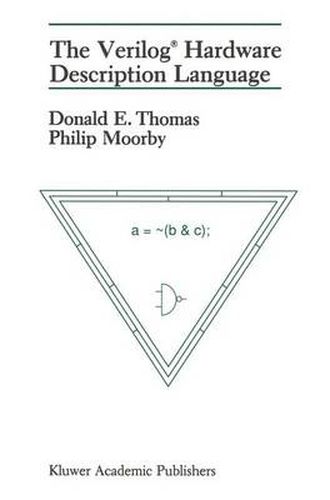Readings Newsletter
Become a Readings Member to make your shopping experience even easier.
Sign in or sign up for free!
You’re not far away from qualifying for FREE standard shipping within Australia
You’ve qualified for FREE standard shipping within Australia
The cart is loading…






This title is printed to order. This book may have been self-published. If so, we cannot guarantee the quality of the content. In the main most books will have gone through the editing process however some may not. We therefore suggest that you be aware of this before ordering this book. If in doubt check either the author or publisher’s details as we are unable to accept any returns unless they are faulty. Please contact us if you have any questions.
The Verilog language is a hardware description language which provides a means of specifying a digital system at a wide range of levels of abstraction. The language supports the early conceptual stages of design with its behavioral level of abstraction, and the later implementation stages with its structural level of abstraction. The language provides hierarchical constructs, allowing the designer to control the complexity of a description. Verilog was originally designed in the winter of 1983/84 as a proprietary verification/simulation product. Since then, several other proprietary analysis tools have been developed around the language, including a fault simulator and a timing analyzer; the language being instrumental in providing consistency across these tools. Now, the language is openly available for any tool to read and write. This book introduces the language. It is sometimes difficult to separate the language from the simulator tool because the dynamic aspects of the language are defined by the way the simulator works. Where possible, we have stayed away from simulator-specific details and concentrated on design specification, but have included enough information to be able to have working executable models. The book takes a tutorial approach to presenting the language.
$9.00 standard shipping within Australia
FREE standard shipping within Australia for orders over $100.00
Express & International shipping calculated at checkout
This title is printed to order. This book may have been self-published. If so, we cannot guarantee the quality of the content. In the main most books will have gone through the editing process however some may not. We therefore suggest that you be aware of this before ordering this book. If in doubt check either the author or publisher’s details as we are unable to accept any returns unless they are faulty. Please contact us if you have any questions.
The Verilog language is a hardware description language which provides a means of specifying a digital system at a wide range of levels of abstraction. The language supports the early conceptual stages of design with its behavioral level of abstraction, and the later implementation stages with its structural level of abstraction. The language provides hierarchical constructs, allowing the designer to control the complexity of a description. Verilog was originally designed in the winter of 1983/84 as a proprietary verification/simulation product. Since then, several other proprietary analysis tools have been developed around the language, including a fault simulator and a timing analyzer; the language being instrumental in providing consistency across these tools. Now, the language is openly available for any tool to read and write. This book introduces the language. It is sometimes difficult to separate the language from the simulator tool because the dynamic aspects of the language are defined by the way the simulator works. Where possible, we have stayed away from simulator-specific details and concentrated on design specification, but have included enough information to be able to have working executable models. The book takes a tutorial approach to presenting the language.